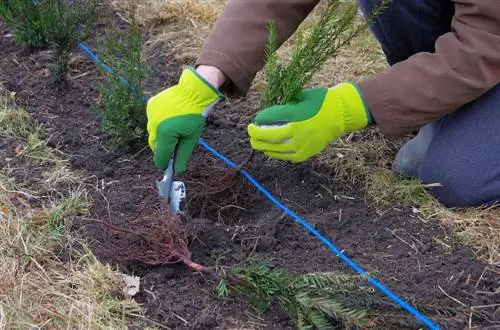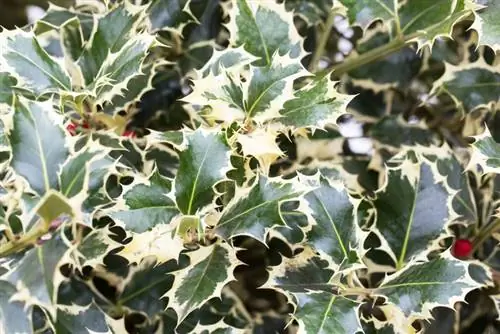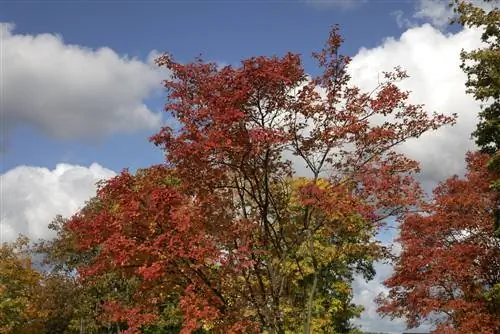- Author admin [email protected].
- Public 2023-12-16 16:46.
- Last modified 2025-01-23 11:22.
If you want to plant a hedge in your garden, you can choose from numerous suitable hedge plants. Yew and thuja are particularly popular, but also problematic for various reasons. We will explain the advantages and disadvantages of both types and list alternatives.

Should I choose a yew or thuja for my hedge?
Yew and thuja are both evergreen hedge plants with advantages and disadvantages. Yew trees offer ecological benefits, good privacy protection and are easy to care for, but highly poisonous. Thujas are just as easy to care for and versatile, but only slightly poisonous and ecologically less valuable.
What are the advantages and disadvantages of the yew tree?
A yew hedge made from the native yew species Taxus baccata has many advantages over thuja, but above all that of ecological harmlessness. In contrast to the tree of life, the yew tree provides protection and food for birds and other small animals. The conifer also scores with these advantages:
- evergreen
- hardy
- grows very densely, good privacy protection
- very compatible with cutting, suitable for topiary
- easy to care for and undemanding
- shade tolerant
In addition, the plant looks varied and attractive in autumn thanks to the dark green needles and bright red fruits.
However, and this is a big disadvantage, all parts of the yew plant are highly poisonous and can cause fatal poisoning to humans and animals.
What advantages and disadvantages does Thuja have?
Arborvitae also grow very tall and dense, which is why they are ideal for hedges. Further advantages of the cypress plant include:
- evergreen
- very easy to cut
- easy to care for and adaptable
- retains its shape even without cutting
- for sunny to partially shaded locations
- versatile use
- great variety of varieties with different needle colors
But be careful: Many gardeners don't know that thuja is also poisonous to humans and animals. Although the toxicity of this hedge plant is not as pronounced as that of the yew, it cannot be dismissed out of hand. In addition, thuja grow extremely slowly, at an average of 10 to 15 centimeters per year, and have little ecological benefit.
Are there non-toxic alternatives to yew and thuja?
Other popular hedge plants such as cherry laurel or box are also poisonous, albeit to a small extent. However, if you want to be on the safe side, you can use non-toxic alternatives. Also easy to care for and evergreen are:
- Fargesia bamboo: does not form runners, so there is no need to worry about overgrowth
- Serbian spruce: compact, dense and fast growing, insensitive to disease and very frost hardy
- Canadian hemlock: tolerates pruning, frost hardy, shade tolerant, overhanging growth
Although not evergreen, hornbeams and beeches are still very suitable for hedges and are non-toxic.
Can you mix yew and thuja in a hedge?
When there are gaps in an existing hedge, the question sometimes arises as to whether they can be filled with trees of a different type. For example, are yew trees suitable for closing gaps in a thuja hedge? Basically, this is a good idea because yews visually harmonize well with thuja and also have fewer problems with growth and root competition than young arborvitae. In addition, the needs are similar in terms of location, soil moisture and care. In addition, both species grow very slowly. However, be sure to pay attention to the recommended minimum distance between the individual plants.
Tip
Where is the thuja originally native?
In contrast to the native yew (Taxus baccata), the tree of life or thuja does not come from Europe. There are different species that are native to North America (Occidental arborvitae, Thuja occidentalis) or Asia (Oriental arborvitae, Thuja orientalis). Like the yews, the thujas also belong to the botanical order of conifers.






